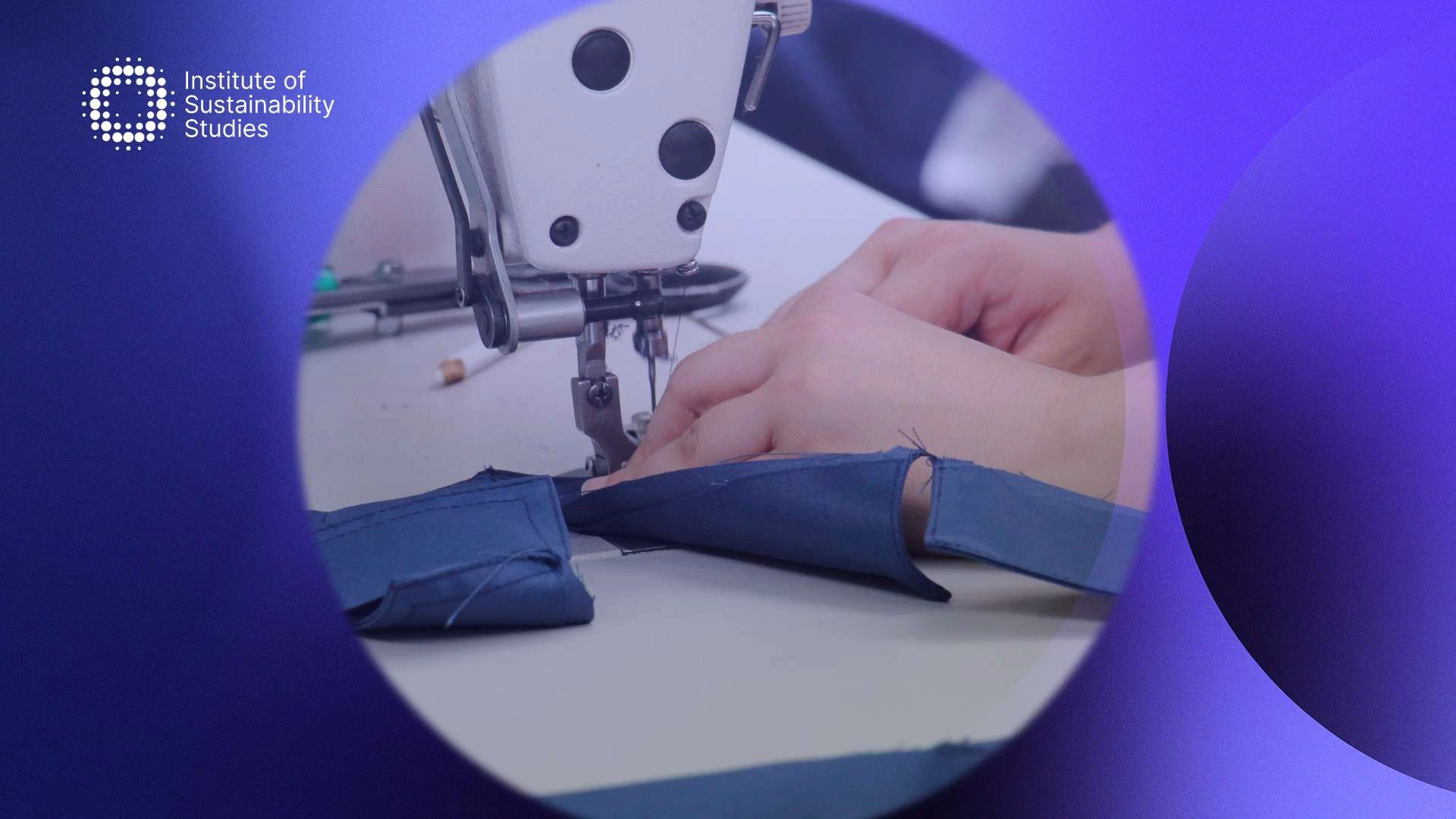Green manufacturing is revolutionising the way businesses produce goods by integrating sustainability into every stage of production. As industries face increasing pressure to minimise their environmental footprint, the need for business sustainability strategies has never been greater.
Companies must conserve resources and reduce emissions to meet sustainability goals. Adopting green manufacturing has become essential for businesses looking to balance economic performance with environmental responsibility. Below, we explore the principles, challenges, and best practices of green manufacturing.
What is green manufacturing?
Green manufacturing is the process of producing goods in ways that minimise environmental impact, conserve natural resources, and prioritise sustainability throughout the production lifecycle. It involves adopting environmentally friendly practices, technologies, and systems to reduce emissions, waste, and energy consumption while maintaining efficiency and quality.
At its core, green manufacturing integrates sustainable practices into every stage of production, from sourcing raw materials to design, operations, and distribution. By doing so, it supports global efforts to combat climate change, conserve ecosystems, and promote a circular economy.
Key principles of green manufacturing:
- Energy efficiency: Reducing energy consumption by optimising processes, using renewable energy sources like solar or wind, and adopting energy-efficient equipment.
- Resource conservation: Minimising raw material usage and waste by implementing sustainable sourcing and closed-loop production systems.
- Pollution reduction: Implementing technologies and processes that reduce harmful emissions, water contamination, and chemical usage.
- Waste management: Promoting recycling, reusing materials, and reducing landfill waste by adopting circular economy principles.
- Eco-friendly design: Designing products that are durable, easy to repair, and made from recyclable or biodegradable materials.
Challenges in green manufacturing
While green manufacturing offers significant environmental and economic benefits, its implementation comes with challenges that organisations must address. Below are some of the key challenges:
High initial costs
Transitioning to green manufacturing requires substantial upfront investments in new technologies, energy-efficient equipment, and sustainable raw materials. For many companies, especially SMEs, these costs can be prohibitive. Installing solar panels or retrofitting machinery for energy efficiency, for instance, involves significant capital expenditure.
Limited access to sustainable materials
Sourcing eco-friendly and renewable raw materials can be challenging due to availability, cost, or regional limitations. Green materials are often more expensive, and demand can outstrip supply.
Technological constraints
Not all industries have access to advanced green technologies, and some sectors lack the infrastructure to support sustainable production methods. Additionally, research and development (R&D) for cleaner processes can be time-consuming and expensive. For example, industries like heavy manufacturing may require breakthroughs in cleaner fuels or emissions reduction technologies.
Complexity in retrofitting existing systems
Integrating green manufacturing practices into legacy systems can be complex. Many traditional factories were not designed with sustainability in mind, so retrofitting them for energy efficiency and waste reduction can be challenging. Therefore, companies may face operational disruptions, long timelines, and high costs for transitioning.
Lack of skilled workforce
Green manufacturing requires specialised knowledge of sustainability practices, energy management, and advanced technologies. A lack of skilled workers in this area can slow adoption.
Regulatory and policy uncertainty
Inconsistent regulations and a lack of standardised sustainability policies across regions can create confusion for businesses. Without clear frameworks, companies may struggle to align their green initiatives with compliance requirements. For example, varying emissions limits or reporting requirements can make global implementation difficult for multinational organisations.
Balancing profitability and sustainability
Maintaining profitability while transitioning to sustainable practices can be challenging. Companies face pressure to meet short-term financial goals while investing in long-term green initiatives. With this in mind, a lack of immediate financial returns can deter businesses from fully committing to sustainability efforts.
Consumer awareness and demand
While demand for sustainable products is growing, some consumers remain price-sensitive and unwilling to pay a premium for green products. This can limit incentives for companies to invest in green manufacturing. For instance, balancing affordability and sustainability can be a challenge for businesses targeting mainstream markets.
Best practices for green manufacturing
Below are some best practices for greening manufacturing.
Optimise energy efficiency
Improving energy efficiency is a fundamental best practice in green manufacturing. By reducing energy consumption across production processes, companies can lower their environmental impact and operational costs. One effective strategy is upgrading to energy-efficient technologies, such as LED lighting, advanced HVAC systems, and high-efficiency machinery.
Additionally, integrating renewable energy sources, such as solar, wind, or bioenergy, can replace traditional fossil fuels and significantly reduce carbon emissions. Regular energy audits are also essential to identify inefficiencies and uncover opportunities for improvement. For example, Tesla’s Gigafactory operates entirely on renewable energy, setting a benchmark for energy-efficient manufacturing facilities.
Use sustainable raw materials
The adoption of sustainable raw materials is crucial for reducing the environmental footprint of manufacturing. This includes sourcing renewable, recycled, or certified sustainable materials to replace finite and resource-intensive inputs. Bio-based materials and alternatives to hazardous substances are increasingly being incorporated into production processes.
Companies can also partner with ethical suppliers who prioritise responsible and sustainable sourcing practices. A notable example is Adidas, which uses recycled ocean plastics to produce sustainable footwear. This showcases how sustainable materials can add value to both products and brand reputation.
Implement waste reduction strategies
Minimising waste is central to green and sustainable manufacturing but it also supports the principles of the circular economy. Instead of disposing of materials, manufacturers can implement closed-loop systems that allow waste to be reused or recycled back into production.
By designing products for durability, reuse, and easy disassembly, companies can extend product lifespans and reduce overall waste. Efficient waste management systems, such as repurposing by-products and investing in recycling infrastructure, are also key. Businesses like Dell have successfully created closed-loop recycling programmes to recover and reuse materials, saving costs while reducing their environmental impact.
Embrace sustainable product design
Sustainable product design is a proactive strategy that integrates environmental considerations from the very beginning of a product’s life cycle. Companies can focus on designing products that use fewer materials, are easier to recycle, and produce minimal waste.
Incorporating modular designs and renewable materials ensures that products can be refurbished or repurposed rather than discarded. By using life cycle analysis tools, manufacturers can assess the environmental impact of their products and identify areas for improvement.
Reduce water usage and pollution
Water conservation is an integral part of green manufacturing practices. Manufacturers can invest in technologies that recycle and reuse water throughout production processes to reduce consumption. Implementing water treatment systems can minimise pollution and ensure compliance with environmental standards.
By incorporating closed-loop systems, businesses can reduce wastewater discharge and lessen their impact on local ecosystems. Industries such as textiles and food processing, which rely heavily on water, have particularly benefited from water-efficient innovations that lower usage and improve overall sustainability.
Promote supply chain sustainability
Green manufacturing extends beyond production to the entire supply chain. Companies can work with suppliers and logistics partners who prioritise sustainability, ensuring ethical practices and reduced carbon emissions throughout the value chain.
By incorporating eco-friendly transportation methods, optimising delivery routes, and reducing packaging waste, businesses can achieve a more sustainable supply chain. Moreover, transparency and collaboration with stakeholders ensure alignment with sustainability goals.
Foster a culture of sustainability
A sustainable manufacturing strategy is only effective when supported by a strong organisational culture. Companies can train employees on sustainability best practices, encouraging innovation and collaboration to meet environmental goals.
Regular assessments, reporting, and recognition for progress help embed sustainability as a core business value. By involving all departments in green initiatives, manufacturers create a shared sense of responsibility for achieving sustainability objectives.
Final thoughts
Green manufacturing represents a powerful opportunity for businesses to address environmental challenges, improve efficiency, and deliver long-term value. While the transition may come with initial hurdles, adopting sustainable practices and innovative technologies positions manufacturers to thrive in a rapidly evolving market where environmental responsibility is paramount.
By taking the above steps, organisations can create a positive impact on the planet and gain a competitive advantage. For businesses looking to lead the way in sustainable production, the path forward lies in continuous improvement and commitment to greener solutions. Our comprehensive business sustainability training equips you with the tools and strategies to implement green manufacturing practices effectively, driving both business success and environmental progress.
Dedicated to harnessing the power of storytelling to raise awareness, demystify, and drive behavioural change, Bronagh works as the Communications & Content Manager at the Institute of Sustainability Studies. Alongside her work with ISS, Bronagh contributes articles to several news media publications on sustainability and mental health.
- Bronagh Loughlinhttps://instituteofsustainabilitystudies.com/insights/author/bronagh/
- Bronagh Loughlinhttps://instituteofsustainabilitystudies.com/insights/author/bronagh/
- Bronagh Loughlinhttps://instituteofsustainabilitystudies.com/insights/author/bronagh/
- Bronagh Loughlinhttps://instituteofsustainabilitystudies.com/insights/author/bronagh/











